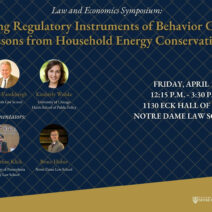As the earth pivots and shifts under the weight of climate change, Russia’s northern territories emerge as a poignant metaphor for the planet’s profound transformations. Once a frozen expanse, characterized by ice-bound landscapes and bleak winters, this vast region is succumbing to the relentless embrace of global warming. The specter of thawing permafrost looms large, reshaping the fabric of ecosystems, economies, and communities within the world’s largest nation.
The Arctic region, which encompasses parts of northern Russia, is among the fastest-warming areas on the planet. Average temperatures in this region have surged by more than 2 degrees Celsius since the pre-industrial era. The once-frozen ground, a bastion of stability, is now transitioning into a quagmire where ancient organic matter awakens from its long slumber. This phenomenon is akin to a giant incubator, releasing previously trapped carbon dioxide and methane—two potent greenhouse gases—into the atmosphere. The result? An accelerating feedback loop that exacerbates the already critical state of global warming.
Ecologically, the ramifications of this warming are profound. Habitats are being altered and species are struggling to adapt. The shifting of climatic zones is prompting the migration of flora and fauna previously confined to specific regions. For instance, as temperatures rise, tree lines are moving northward, encroaching upon areas that have been tundra for millennia. This alteration conveys a poignant narrative of biodiversity at risk; the delicate balance that has prevailed for centuries is now under siege.
On another front, the thawing of permafrost raises crucial questions about land and resource management. As the ground softens, it becomes susceptible to erosion and degradation, disrupting local communities and their livelihoods. Indigenous populations, who have thrived in symbiosis with their environment, face increasing challenges as traditional hunting grounds become fragmented. The integrity of their cultural identity is intertwined with the health of the land, making these changes not just environmental, but existential.
Moreover, the warming North has given rise to a new geopolitical narrative. Russia’s Arctic expansionism, motivated by the promise of untapped resources like oil and gas, represents a double-edged sword. While economic opportunities beckon with the prospect of exploiting these reserves, they are inevitably accompanied by ecological consequences. The extraction process itself contributes to further greenhouse gas emissions, perpetuating the cycle of warming that threatens this delicate region.
Transportation routes also undergo transformation as ice recedes. The Northern Sea Route, once virtually impassable, has become navigable for extended periods each year, opening new avenues for trade and commerce. This shift alters the dynamics of global shipping, yet it introduces the specter of increased maritime traffic in a fragile ecosystem, with consequences for marine life and potential oil spills that loom like dark clouds on the horizon.
Climate change’s fingerprints are not limited to environmental shifts; they extend deep into the realm of social dynamics. The warming North is a crucible for innovation and adaptation. As communities contend with their evolving realities, there is a burgeoning reliance on technology and scientific research. Collaborative efforts among government agencies, local stakeholders, and international bodies seek to tackle the mounting challenges head-on. Programs aimed at sustainable practices are being pursued, exemplifying resilience and awareness amidst adversity.
Nevertheless, as Russia pursues these adaptive strategies, the ethical implications of climate responsivity cast a long shadow. The quest for solutions must grapple with the stark realities of justice and equity. For whom are the benefits of resource extraction intended, and at what cost to the indigenous people and local ecosystems? Thus, the narrative surrounding Russia’s warming North must encompass not only the urgency of environmental action but also the imperative for inclusive dialogue and equitable decision-making.
As the seasons unfold, the enchanting beauty of the Arctic reveals itself in its transient splendor. The Northern Lights dance in a dazzling display, while the resilient wildlife continues its struggle for survival. Amidst the profound changes wrought by global warming, it is crucial to grasp the narrative of the warming North—an ongoing saga that intertwines the fate of humanity with the intricate tapestry of the planet’s ecosystems.
The warming North encapsulates the essence of climate change—an awakening that demands our attention and immediate action. As temperature records are shattered, the precarious balance of nature sways perilously. The challenge remains: will we as stewards of the earth respond with integrity and foresight, or allow the march of devastation to flourish unchecked? The lens through which we view Russia’s vast northern territories must shift from mere observation to vigilant engagement.
In conclusion, the narrative of Russia’s changing climate resonates beyond its borders. It serves as a clarion call for individuals, communities, and nations alike to reflect on their own roles in the unfolding drama of climate change. As the world collectively grapples with the environmental, societal, and ethical implications of a warming planet, we stand at the precipice of profound action. The Arctic may be a distant realm, yet its plight resonates as a universal narrative of interconnectedness, responsibility, and hope.






